Livestock Management in the Mara North: A Tragedy of the Commons
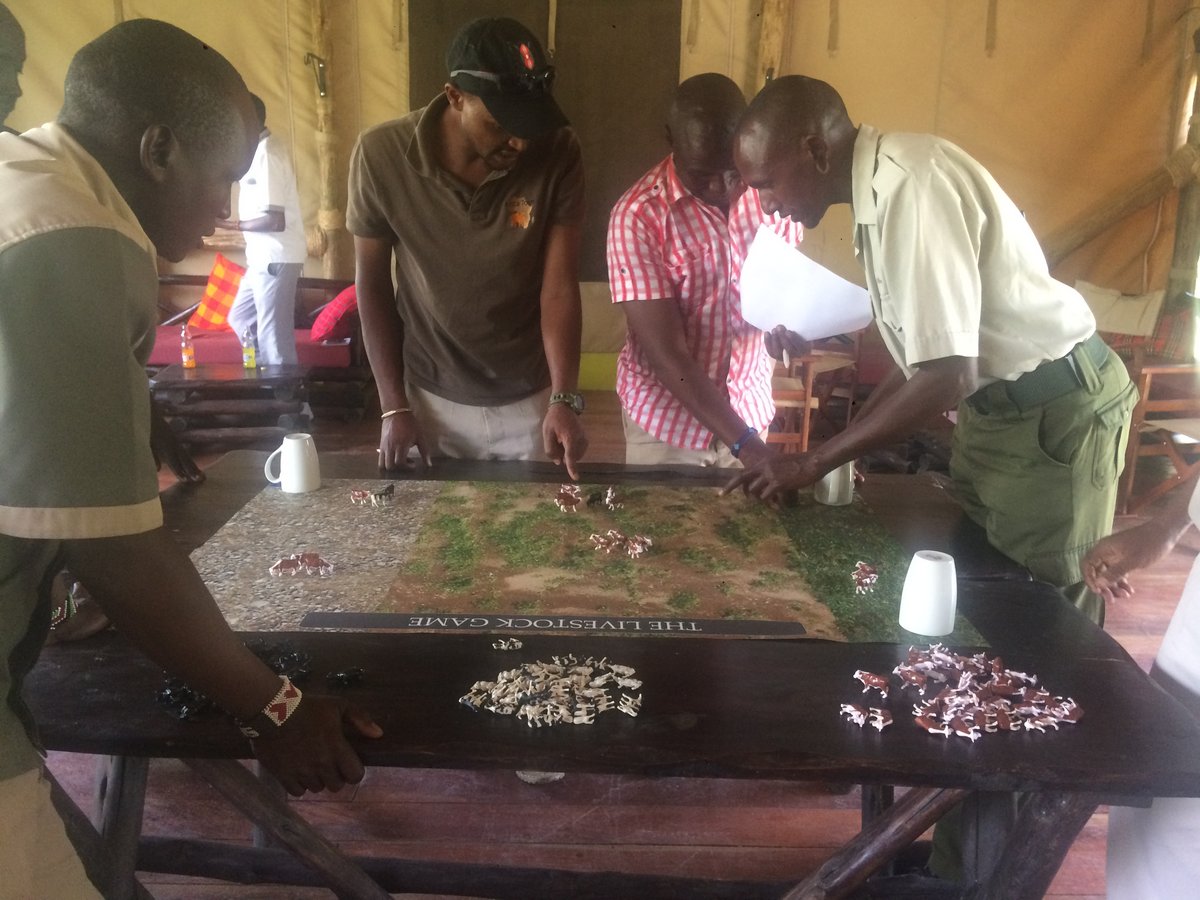
LIVESTOCK MANAGEMENT AND THE LIVESTOCK GAME
Livestock have always been an important part of Maasai culture and lifestyle. But the Maasai grass banks have changed over the years. Following Kenyan Government’s tenure policy, previous common group ranches have been subdivided into private plots.
Mara North Conservancy (MNC) serves as a partnership between twelve camp-owners and 800 landowners and collaborates closely with the Maasai Mara Wildlife Conservancies Association (MMWCA). In return for renting their land to conservancies, landowners obtain a stable monetary compensation to conservancy members. Livestock, however remain an important source of income.
MNC has installed livestock management plans, together with settlement restrictions and limits on fencing which serve to reduce overexploitation of grazing lands and to maintain a rich wildlife – livestock cohabitant. However, with a growing population, as well as climate changes leading to frequent draughts exchanged with periods of flooding, the availability of grass continues to be a problem.
To explore these issues further, a researcher from Aarhus University, Denmark, and part of the Maasai Mara Science and Development Initiative undertook a series of interviews with Maasai livestock owners in November 2017. The purpose of these interviews was to gain enough insights about the dynamics of Mara North livestock issues to be able to develop a board game illuminating these issues.
For grass areas to sustain, there has to be a balance between grassing and growth of grass. To understand the balance between grassing and growth of grass, the researchers built a system dynamics model (see e.g. Sterman, 2000; Larsen and Lomi, 2001; Håkonsson, Klaas, & Carroll, 2012). Based on this model, they developed a card board game named: The Livestock Game.
Datacollection and fieldtrip
In February 2018, the researchers returned to the Mara to play the Livestock Game with Maasai livestock owners (The Livestock Game was developed by Professors Erik Larsen and Dorthe Døjbak Håkonsson, Aarhus University. Pernille Kallehave, Aarhus University, Domic Saningo Kuluo, Benedict Walabengo, and David Noosaron enabled the data collection sessions with translations, actual conduct of the game, employing the computer system, and setting up the meetings.)
Over a period of 10 days, the game was played by over 200 Maasai.
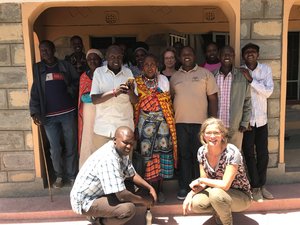
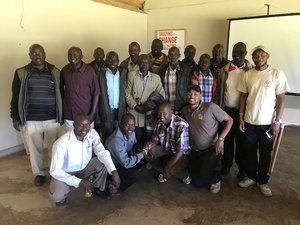
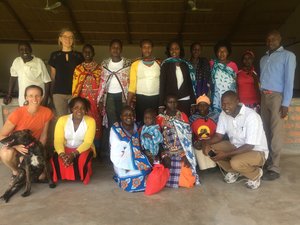
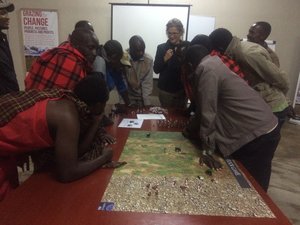
During the game, livestock owners are asked to make decisions relating to number of cows to sell, and calves to buy, and to assign their livestock to different grazing areas on the board game. The board game in that sense represent some of the broader ideas of livestock grazing – particularly relating to grazing and subsequent growth of livestock and regeneration of grass. The game consists of twelve decision rounds, equaling a period of time (e.g. month, years, or season). For each round, players need to make decisions on where to let their livestock graze, and how many they want to sell and buy. The twelve decision rounds enable the researchers to track changes in decision behaviors as a consequence of feedback from previous decisions. Each game session ended with a discussion of the problems represented by the underlying simulation model, and a broader level discussion of sustainable management.
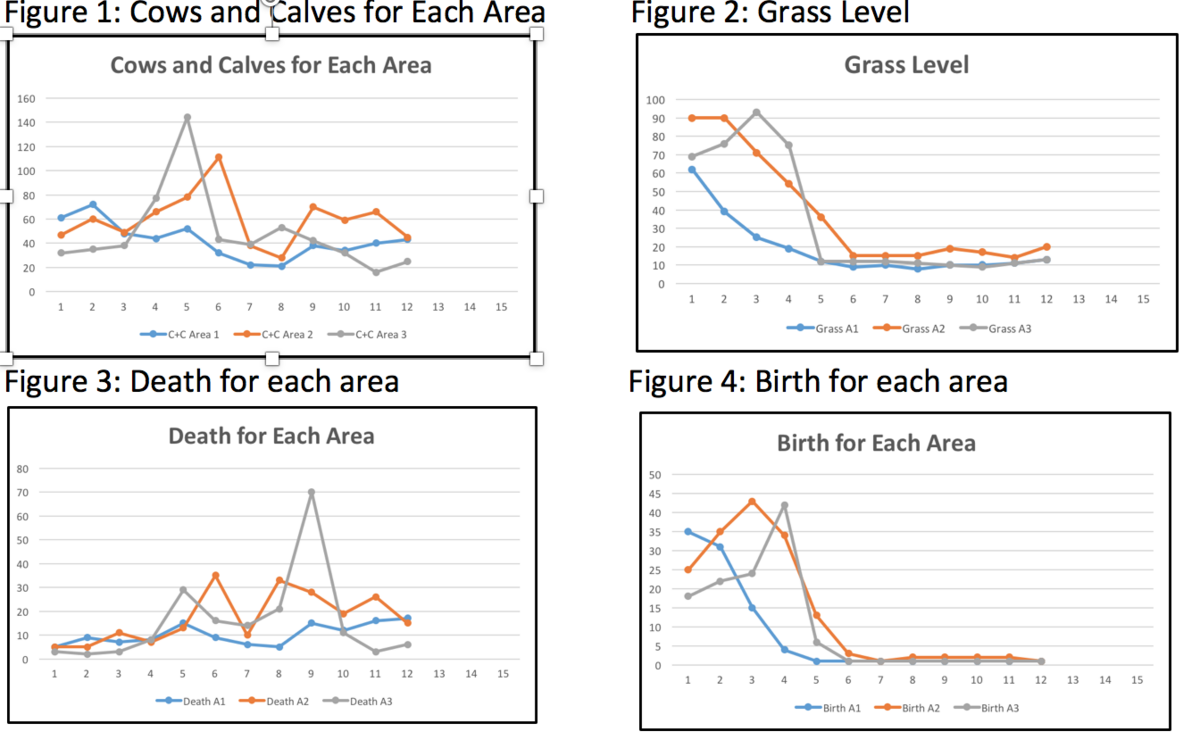
Figure 1 shows participants’ allocation of cows and calves to each of the three areas on the game board (marked as red, blue and grey in the Figure). As appears from Figure 2, when many livestock are allocated to one area, the grass level goes down. Further, Figure 2 shows how, once a grass area has been overexploited, it takes a long time for it to regenerate – even when grazing is limited in the subsequent periods. Figure 3 shows how death is related to grass levels – the less grass, the more deaths. Figure 4 shows how birth is limited when grass levels are low.
While these results pertain to just one the participant groups, the pattern was very much the same across all games.
Further data analysis is currently undergoing, but the preliminary results are obvious: without collaborative structures relating to grassing, grasslands are subject to what is known theoretically as the Tragedy of the Commons (see e.g. Hardin, 1968; Ostrom, 2008).
The Tragedy of the Commons predicts that that individuals who act independently and rationally according to their self-interests, will behave contrary to the best interests of the whole group by depleting some common resource (in this case the grass areas of the Maasai Mara).
The tragedy is not only related to the fact that the commons is destroyed, but also to the fact that its detriment stems from the fact that each livestock breeder acts rationally: The gain from letting one extra cow grass is gained today. And the costs are borne by everyone. The long-term consequence however is, that the commons is destroyed.
The grass areas in the Maasai Mara may no longer constitute a true common in the sense that they can be used by everyone and that there is no management of them, but nevertheless they are being commonly exploited, and rely on communal management – a management system that is currently undergoing substantive changes.
REFERENCES
Hardin, G. (1968). The tragedy of the Commons. Science, New Series, 162(3859), 1243-1248
Håkonsson, D. D., Klaas, P., & Carroll, T. N. (2012). The structural properties of sustainable, continuous change: Achieving reliability through flexibility. The Journal of Applied Behavioral Science, 0021886312464520.
Lomi, A., & Larsen, E. R. (2001) (eds.). Dynamics of organizations: computational modeling and organization theories. Cambridge, MA: MIT Press.
Ostrom, E. (2008). Tragedy of the commons. The New Palgrave Dictionary of Economics, 3573-3576.
Sterman, J. D. (2000). Business Dynamics: Systems Thinking and Modeling for a Complex World. New York: McGraw
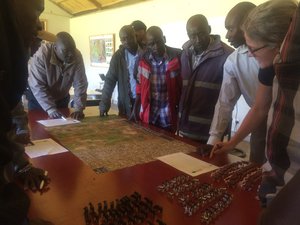
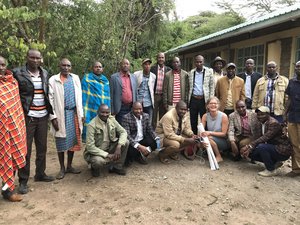
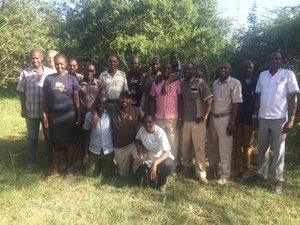
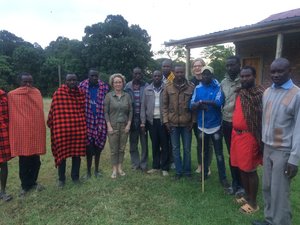
Next steps
Professor Dorthe Døjbak and Professor Erik Larsen are now analysing with the collected data.
They have donated the Board Game to Karen Blixen Camp Trust. More livestock owners are interested in playing the game. These games will be facilitated by staff at Karen Blixen Camp Trust; headteacher Benedict Walubengo and Saningo Kuolo together with landowner David Noosaron.
In May 2018, the magazine Voice of the Mara brought a long article about the project.
RESEARCH: ORGANIZATIONAL DESIGN AS A TOOL IN SOLVINDCOLLABORATIVE CHALLENGES RELATED TO NATURAL RESOURCE COMMONS
How may organization design aid in solving collaborative challenges related to natural resource commons? In April, Professor Dorthe Døjbak Haakonsson from Department of Management at Aarhus University went back to Maasai Mara, Kenya. Professor Erik Larsen and she had recently initiated an extension of their earlier study with Professor Jacob Eskildsen on sustainable grazing of Maasai rangelands. Professor Haakonsson spent her time in Kenya conducting interviews with relevant stakeholders to gain a better understanding of the current context, where many things have changed since we conducted our studies. We made a small video to explain some of the issues.